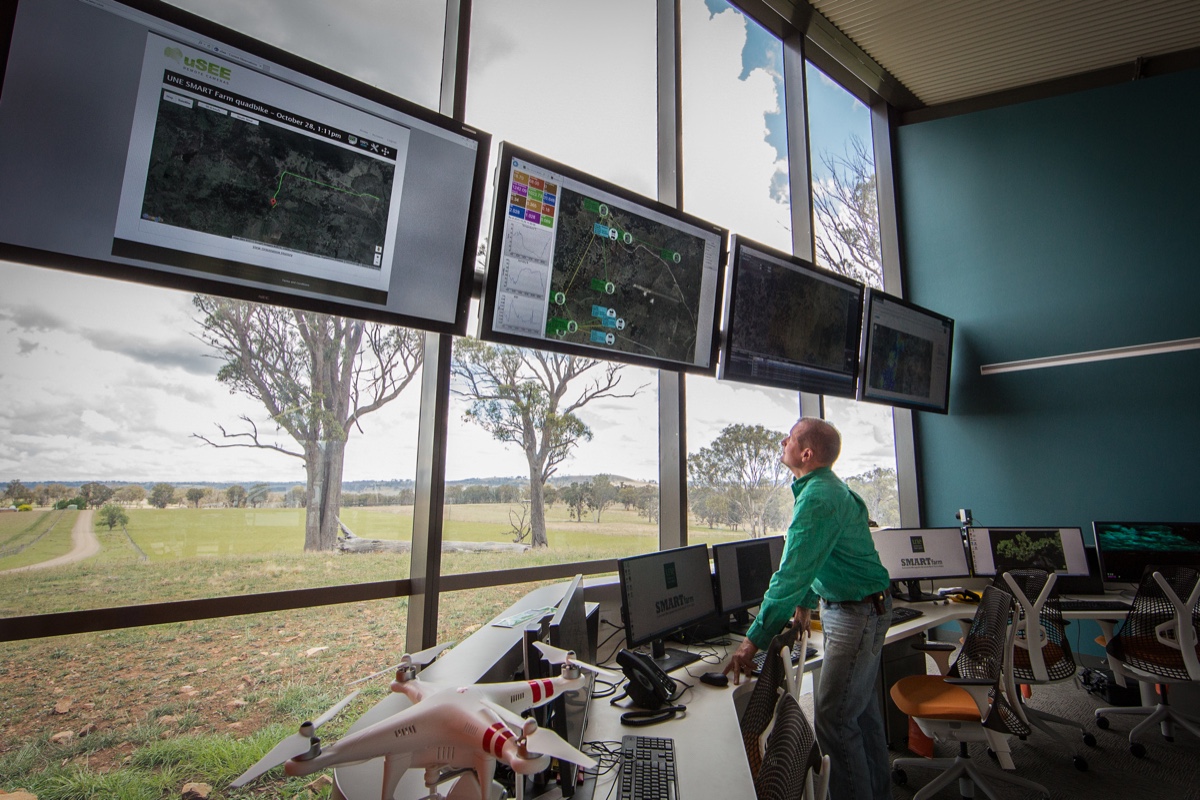There is no lack of potential technologies for advancing agriculture, UNE Professor David Lamb says, but there is a distinct lack of process for making sure those technologies are fit for purpose.
"Ag-tech is going through some growing pains," says the University of New England's McClymont Distinguished Professor and Chief Scientist of the Food Agility CRC.
"We have developed a lot of solutions for collecting data and putting it into the cloud, but we still have problems getting that data to the user, making it relevant to their situation, and scaling it up to service whole industries."
The answers lie not in more technology, Prof. Lamb thinks, but in people.
"For instance, we need more of the sort of multi-disciplinary people I'm calling 'translators'," he says.
"We tend to put data analysts in charge of building our systems, but we also need people who understand the way data works, its intended application, and the sort of people who will be working with the solutions."
"These translators may not be expert in any one thing, but they understand the whole process, and so they can help make sure that the software code is written for people with mud on their boots."
UNE, with its broad footprint of agricultural research, has in Prof. Lamb's view an unusually high population of translators. He anticipates that effective translators will prove to be a distinctive strength for research organisations.
Revising the technology development process itself is also on Prof. Lamb's Food Agility agenda.
The cooperative research centre is dedicated to supporting practical digital intervention in food and fibre supply chains. Rather than build solutions itself, Food Agility is working to build better processes for solution development.
That's where the "agile" in Food Agility comes in.
'Agile development' describes a process where a solution is incrementally co-designed in a collaboration between researchers, developers, and end-users.
"You start with a hypothesis, experiment, refresh the hypothesis based on your findings, and experiment again. Repeat," Prof. Lamb said.
"The Agile process means that end-users constantly get to check the assumptions of researchers and developers, and the final product is very tightly targeted to what end-users need."
Food Agility is currently overseeing 12 projects using Agile concepts. The result, Prof. Lamb hopes, will not just be useful solutions for its partner companies, but practical knowledge about how to take an ag-tech concept and make it operational.
Food Agility is also looking at the data flowing through to users, and working out how to more effectively put information to multiple uses.
"We need to get better at using the same data to inform us about data systems, business decisions and biological indicators," Prof. Lamb said.
"We have an oyster project that is using micro-sensors to monitor factors like weather and water salinity. That data can simultaneously be used to tell producers about production conditions, inform the supply chain about any threats or opportunities that will affect oyster supply, and tell regulators about any issues they need to deal with."
He likens the approach to a 'data lake', where data for an ag sector is pooled and made available to whoever wants to pipe it out and turn it into a form capable of guiding decisions.
"If we're serious about digital agriculture, then we need to make sure it's connected to a digital supply chain. Food Agility is about building an innovation culture so that we harvest the best that digital technologies have to offer, and don't waste too much time on the rest."


